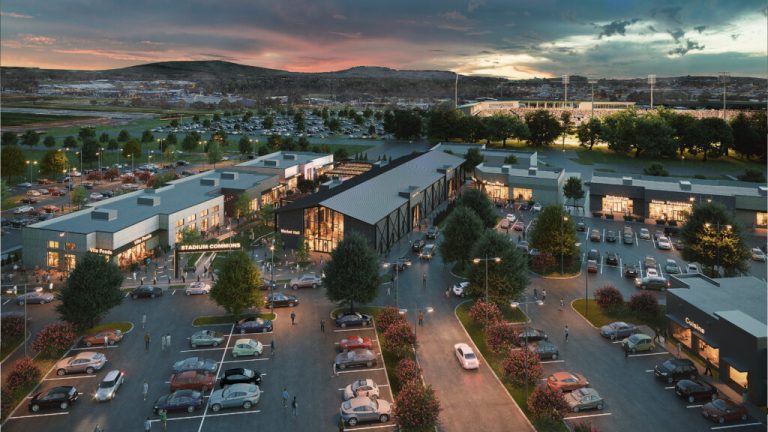Huntsville v. Birmingham: How Alabama’s largest cities compare
Reading time: 5 minutes

I recently moved to Huntsville from Birmingham and one of the first things I am asked by my friends and family back in the Magic City is always something to the effect of, “What are the biggest differences between Huntsville and Birmingham?”
I usally respond by saying I have not lived here long enough to get into any definitive comparisons, but off the top of my head I can say that traffic is worse in Birmingham, but Birmingham is also more navigatable (likely though, because I lived there my whole life), and the barbecue options are a little better up here. But when you look at numbers and rankings, how different are Alabama’s two largest cities?
A little history lesson

Huntsville was founded within the Mississippi Territory in 1805 and became an incorporated town in December of 1811. Huntsville actually served — for just a year — as Alabama’s first capital, as Huntsville hosted the state’s first constitutional convention in Walker Allen’s cabinet-making shop in 1819.
Most of Huntsville’s growth didn’t really happen until after World War II, when Redstone Arsenal and NASA’s Marshall Flight Center were established.
Meanwhile, Birmingham was incorporated after the Civil War in 1871 and experienced rapid growth almost immediately, as it quickly became the industrial hub of the South. Its growth from the 1880s to the 1920s was so fast, it was then dubbed the “Magic City.”
Let’s look at some numbers

As we all likely have heard by now, the 2020 U.S. Census revealed that Huntsville is now Alabama’s largest city. Huntsville has a population of 215,006. Birmingham, which had long been Alabama’s largest city, has a population of 200,733.
That said, the Birmingham metro area remains the largest in the state. The Birmingham-Hoover Metro Statistical Area has 1.1 million people, while the Huntsville Metro Area has 491,723.
But beyond its size, let’s look at some other numbers, as of April of 2022, according to a Best Places study and the Alabama Department of Labor:
Economy
- Household income in Birmingham ($33,770) is 35 percent less than it is in Huntsville ($51,926) and is 71 percent below the National Average.
- Huntsville unemployment rate is 2.1 percent, compared to Birmingham’s unemployment rate of 3.4 percent.
- Job growth in 2022 in Huntsville stands at 3.6 percent, while Birmingham’s is at 2 percent.
Healthcare
- There are 350 physicians per 100,000 people in Birmingham.
- There are 231 physicians per 100,000 people in Huntsville.
Religion
- According to Best Places, 54.7 percent of Huntsvillians claimed a religion, compared to 81.4 percent of Birminghamians.
- More than 40 percent of Birmingham residents are Baptist, while 30 percent of Huntsville residents are Baptists (this being the largest denomination in both cities)
- The only religion Hunstville has more of is Church of Christ, although it is only a slight edge, with .8 percent in Huntsville and .7 percent in Birmingham.
Demographics
- The female population in Huntsville is 51.7 percent, while Birmingham’s is 52.7 percent, making the male population in Huntsville 48.3 percent and 47.3 percent in Birmingham.
- People are 31.3 percent less likely to be married in Birmingham.
- Median age in Huntsville is 36.9 years while Birmingham’s is 35.7 years. The biggest difference between the cities’ age brackets is the 25-34 range, where Birmingham has a 2 percent edge over Huntsville.
- Huntsville is 58.5 percent white, while Birmingham is 22.8 percent white.
- The Black population in Birmingham is 71.3 percent, while in Huntsville it is only 30.6 percent.
How about cost of living?

The real estate boom has affected Huntsville as much as Birmingham, with housing costs skyrocketing over the last two years. The median home cost in Huntsville — $223,500 — dwarfs Bimringham’s median home cost of $79,000.
Rent is another story, however. Huntsville is still more expensive for renters, with the average rent at $1,097. But Birmingham is not far behind, with an average rent of $974.
So who ‘wins?’
Look, there’s no way to say if one city is better than another. It all depends on what you’re looking for in a city. Birmingham and Huntsville each have their strengths and weaknesses. And from a pure numbers standpoint, the cities aren’t that different looking at most metrics.
There is no disputing that Huntsville is growing at a much faster rate than Birmingham, but you must also consider that Birmingham’s metro area is still enormous, and many of Birmingham’s suburbs — like Hoover, Vestavia Hills and Trussville — are experiencing steady growth.
Both cities contribute immensely to the overall culture of Alabama and both bring their own attributes to the state as a whole. And I am proud to call both cities “home.”
Follow Hville Blast on Facebook, TikTok and Instagram, and be sure to subscribe to our newsletter so you don’t miss announcements on what’s happening in and around Huntsville.

 11303 views
11303 views

